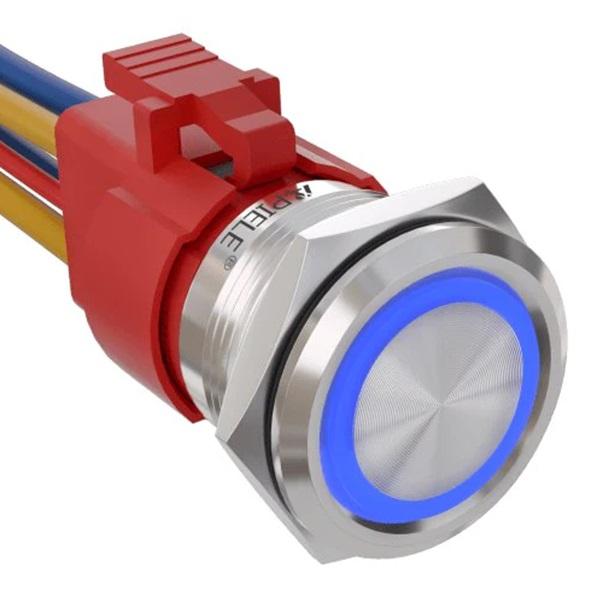Which button is used to switch on the computer?
It's a no-brainer; there is a button on your computer, which, when pressed, switches it on. Once in a while this simple button may be overlooked; however, several intricacies are hiding behind its façade. Have you ever wondered why this button does not stay down like most other buttons we press during the day? In some sophisticated systems, they even feel capacitance and turn them on. Let’s now see how these buttons work.
The Modest Push Button
A physical switch that forms part of the system, the push button on your desktop is found in the front panel mostly. It has been made to balance between its functionality and accessibility to the users.
The push button differs from those of a touch-sensitive nature because it does provide a tactile response, hence enabling one to consciously act while starting a computer.
It does not require much explanation, but it is very important. When pressed, it engages an internal momentary switch, which makes a momentary connection and completes an electrical circuit for a short period.
Capacitive Buttons
Touch-sensitive or capacitive buttons are more prevalent in modern computing devices than the common physical pushbuttons. Much emphasis is paid with regard to design innovation as far as buttons are concerned, and buttons with capacitance sensing technology make a better choice since they provide a sleek look compared to others.
How Capacitance Sensing Technology Works
Capacitive Sensors: These sensors are located beneath the surface, detecting differences in capacitance, the ability for an electrical charge to be stored.
Electric Field Sensing: In a non-touched state, the capacitive sensors lie enveloped by an electric field, which establishes a baseline capacitance.
Touch Detection: On touching, the human body being conductive will change the capacitance between those conductive layers at the point of contact, which is detected by the sensors.
Signal Processing: The change in capacitance is converted to a touch input by the device electronics so that both the location and intensity of the touch can be known consistently.
Features and Benefits
Simple Design: Unlike the normal pushbuttons, capacitive pushbuttons lack mechanical parts hence simple in design and more durable.
Aesthetically Pleasing: Capacitive buttons fit well across the surfaces of the equipment in line with current trends in laptops, smartphones, and most of the present general electronic designs.
Highly Customizable Interactions: In this regard, one will be able to give different functions regarding the touch gestures, thus making it both flexible and convenient.
Responsive to Proximity: They are either going to sense through contact directly or rather by just a light touch or even proximity.
Backlit Options: Many have backlight in the option for added lit visual feedback, thereby contributing towards user experience when in dimly lit environments.
Powering On: Power Supply Unit Response
Once the button is pressed, the signal will now proceed to make its way to the power supply unit (PSU) as the electrical circuit is completed, and here, external power that is inputted will then be converted into a version that the internal components of the computer can use.
Initializing the System: BIOS/UEFI
The Basic Input/Output System (BIOS) or Unified Extensible Firmware Interface (UEFI) takes over when power is supplied to the motherboard. This firmware, which is embedded in the motherboard’s memory, initializes hardware components and performs diagnostic tests (Power-On Self-Test or POST) to ensure that the system is ready.
Handover to the Operating System
After initializing hardware, BIOS/UEFI transfers control to the computer’s operating system (OS). It could be Windows, macOS, Linux, or any other OS that loads important system files, starts up a graphical user interface (GUI) or command-line interface (CLI), and presents a login screen to a user.
Power Management and User Commands
The push button does more than just turn on the computer. It responds differently to user commands depending on the state of the system. Holding it down may cause a forced shutdown, while a short press can initiate sleep or hibernate modes, thereby contributing towards power management.
Reliability and User Experience
For a seamless user experience, the reliability of the push button is crucial. Malfunctions or inconsistencies can make it difficult for one to turn on their computer, lead to unexpected shutdowns or prevent access to power management features.
Closing Remarks
Understanding how the push button and capacitive button work sheds light on how a computer starts and emphasizes its importance in having efficient operations, including pressing a button to start a computer. Once pressed, however, this humble switch will lead us through digital spaces where every touch results in some sort of process affecting our experience with technology.
For state-of-the-art computing solutions and an unwavering commitment to quality, browse through APIELE’s offerings. APIELE guarantees you accuracy and innovativeness at every click and command during your use of computers. Go digital with APIELE – a name synonymous with technological excellence.

